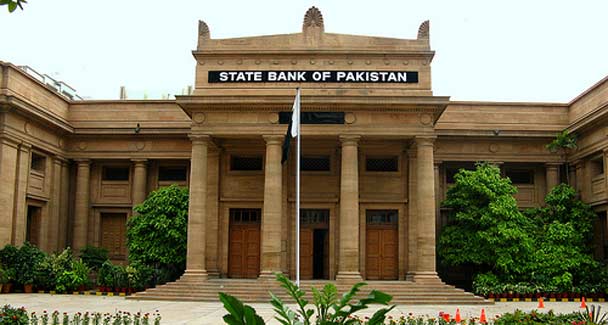- Advises banks, DFIs to create separate SME departments
KARACHI: State Bank of Pakistan (SBP) has devised a strategy with a vision to increase the ratio of SME financing to private sector credit to 17 per cent, and to increase the number of SME borrowers to 500,000, by the end of 2020.
This was said by SBP Development Finance Group Executive Director Samar Husnain. He added that the State Bank’s efforts date back to more than a decade now and the quest for access to finance for SMEs has been one of its top priorities.
He said that SBP has advised the banks and DFIs to create separate SME departments headed by sector specialists in business development. Similarly, banks have been advised to separate risk management for SME financing to have a better understanding and risk mitigation of SME portfolio.
Now, all the banks and DFIs have created dedicated departments for SME financing to have a focused approach in targeting SME clients.
Furthermore, SBP has acquired due support from federal/provincial government stakeholders, World Bank and IFC for structural improvements, market development and capacity building initiatives for SME development.
One of the key elements in the economic composition is the SME sector which remains financially excluded. The corporate sector has had access to finance since its inception with banks.
On the lower end, microcredit has attracted immense attention in the recent decade and a half and has penetrated across the country. However, SMEs, also known as the missing middle, are still missing at large. The gap between the micro and corporate credit belongs to small and medium businesses which lack access to formal credit from financial intermediaries.
This phenomenon has been fully addressed by a number of developing countries, however, there are many countries which are still struggling, Pakistan being one of them.
Overview of SME finance in Pakistan
Pakistan currently houses over 3 million SMEs, employing 78 per cent of country’s non-agricultural labour force, and account for 30 per cent of GDP and 25 per cent of the country’s exports of manufactured products. Despite sectors’ tremendous contribution to the economy, only a fractional number of 171,000 SMEs have formal access to finance of Rs374 billion (as on September 30, 2017) through banks/ DFIs.
Out of the total 171,000 SMEs obtaining financing pie, 88 per cent are small enterprises while 12 per cent are medium-sized entities.
Small enterprises occupy Rs154 billion of the financing, while 12 per cent of the medium enterprises accounts for Rs222 billion. SMEs are bifurcated into 3 broader business types i.e. traders, manufacturers and service-oriented businesses.
The group distribution of the data exhibits that 36 per cent of total financing obtained by SMEs is trading concern, 34 per cent are manufacturing and 30 per cent are servicing.
As per latest PBS data, women account for 48 per cent of the country’s population of 207 million, whereas women-owned SMEs currently obtaining financing from the banks are limited and account for a little more than 6,000.
Almost a decade ago, SME finance stood at 17 per cent (fiscal year 2007) against the total private sector credit. The level of financing to SMEs shrunk considerably due to crowding out effect on private sector credit caused by government borrowing, high transaction costs and the fear of NPLs on SME financing.
As of June 30, 2017, financing to SMEs was around 9 per cent of total private sector credit by banks and DFIs. The current scenario demands a robust and focused approach for the development of SME sector.
Given the importance of SMEs for the economy, with its impact on employment and an inclusive growth, the financing to the SMEs is relatively very low, which is one of the major obstacles in its growth.
Key challenges in promotion of SME finance
Like any other developing country, the financial disparity is one of the key obstacles for SMEs in Pakistan which hinder sector’s growth, diversity, and survival. Unlike large firms, SMEs face following limitations:
- Lack of financial literacy: Literacy is one of the key issues the country is facing and SMEs are no different when it comes to awareness about prevailing financial solutions available in the market.
- Inability to document/ record bankable transactions: SMEs do not adhere to adequate bookkeeping or maintenance of accounting records understandable by the banks. These unclear records obstruct the banks from determining reliable future cash flows a business can generate and eventually financed.
- Lack of liquid and/ or strong collaterals: SME borrowers lack securities that are easily convertible to cash to pay off bank loans. As per practice, banks either rely on sound collaterals or reliable cash flows which provide comfort in taking exposure against SME loans, whereas both are unavailable with the under-served sector.
- Complicated loan procedures and availability of credit from informal sources: Based on the lengthy loan procedures and centralised decision making approaches of banks, SMEs refrain from obtaining credit from banks. In contrast, obtaining credit from informal sources is relatively easier, less cumbersome and easily available. Though such credit is available at a higher price (mark up rate) to SMEs, it is offered based on market presence and goodwill an SME enjoys.
- Fear of disclosing financial information: Most of the SMEs abstain from entering bank branches for opening a bank account as they fear disclosing information about their businesses or at times explains their financial problems. Another reason could be the strict tax implications they may face subsequent to financial disclosures.
On the other hand, banks, while taking exposures on SMEs, face following challenges:
- SMEs are perceived risky: Lack of adequate business structures have been obstructing banks from taking credit exposure on them. Banks’ perception is backed by past failures while lending, inadequate succession planning of SMEs and issues in projections of business continuity.
- 2. Asymmetric information: The information provided by an SME at the time of loan request does not match with the sector trends and thus is considered by the bank unreliable. Furthermore, the banks do not have reliable industry benchmarks’ information with regards to SME sector. Therefore, this hinders banks from taking a risk on the SME borrower.
- High administrative cost: SME credit portfolio appears to be more expensive with respect to its handling cost since more human resources and time are required to process a loan of small ticket size.
- Lack of skilled staff at banks: Based on the large hierarchy of the banks, the staff available at local/ regional end lacks skills or expertise to assess the financing needs, capacity to structure credit, and ability to present credit proposals for approval while taking a risk on SMEs. This has been learnt as one of the reasons SMEs are avoided from general availability of credit.
- 5. Corporate mindset: At head offices level, banks are more comfortable while taking a risk on exposure of large corporate enterprises due to reliable information, and sound collaterals offered by them. Furthermore, corporate entities are offered larger loan volumes at a lesser price by the banks based on their past behaviours and business association with the banks. With this mindset, they are not comfortable in serving SME clients.
Secured Transaction Registry: In order to enable banks to register a charge on moveable assets of non-incorporated entities, Secured Transactions Act, 2016 has been passed by the Parliament and efforts are being taken to form an electronic registry. Non-availability of collateral is an obstacle faced by SMEs and the electronic registry will pave the way for future lending to the priority sector.
Credit Guarantee Scheme: SBP launched the Credit Guarantee Scheme (CGS) in March 2010, under which SBP shares 60 per cent of credit losses of lending banks on their outstanding loan portfolio against small and rural enterprises. Under the Scheme, fresh and collateral deficient borrowers are preferred.
The scheme has turned out to be a big success in meeting the credit needs of collateral deficient but creditworthy micro, small and rural enterprises from short to medium term loans of 3 to 5 years. State Bank has allocated credit guarantee limits of Rs3,725 million for the CY-2017 to 21 PFIs. Through this scheme, banks have been facilitated in serving a large number of new and collateral-deficient small borrowers.
Moreover, this scheme carries infected portfolio of less than 2 per cent compared to very high NPLs of the industry in yesteryears.
SME Structure in banks and DFIs: In order to achieve the set SME financing benchmarks, it was of utmost importance that a dedicated department for SME financing was formed separately from conventional commercial financing in each bank/DFI, as the SME market requires a customised approach, different set of the skills and tools to assess the needs of individual SME borrowers.
SME Finance Targets: SBP introduced SME financing targets regime in 2015 by assigning an overall target of Rs398 billion to the banks and DFIs. By the end of 2016, banks reported an exposure of Rs401 billion. This year, banks have been assigned even higher targets.
For the current year, banks were also advised to regionally distribute the targets by themselves. After compilation of the regional targets as reported by banks, it has been observed that two provinces namely, Khyber-Pakhtunkhwa and Balochistan have been assigned very low targets. This clearly shows regional disparity. Therefore, from next year, banks and DFIs will be assigned provincial targets.
SBP Refinance Schemes: State Bank of Pakistan has also offered a medium to long-term financing facility for modernisation of their existing units and setting up of new SME mills/units to produce quality products. The rate charged to the borrowers is 6 per cent for a maximum period of up to 10 years.
In addition to this, SBP has introduced markup subsidy and guarantee facility for rice husking units of Sindh.
This subsidised financing was launched with funding from Sindh Enterprise Development Fund of Sindh government to support BMR and establishment of new rice husking mills in the province of Sindh. The subsidy is in the form of reducing the end user rate to 2 per cent and offering guarantee cover to banks to bear their credit loss against principal outstanding amount to the extent of 30 per cent.
























